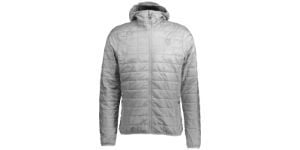Sign in
Contact
-
MenuBack
-
Our Sports
-
-
-
-
-
- Hiking clothes
-
- Hiking caps
- Hiking hats
- Hiking socks
- Men's hiking jackets
- Men's hiking pants
- Men's hiking T-shirts
- Men's Softshell Jacket
- Women's hiking jackets
- Women's hiking pants
- Women's hiking T-shirts
- Women's Softshell Jacket
-
-
-
-
-
-
-
-
- Trail shoe
-
-
-
- Trail clothing
-
- Men's tank tops
- Men's trail jackets
- Men's trail shorts
- Men's trail T-shirts
- Men's trail tights
- Men's windproof jackets
- Trail caps
- Trail socks
- Women's tank tops
- Women's trail jackets
- Women's trail shorts
- Women's trail T-shirts
- Women's trail tights
- Women's windproof jackets
-
-
-
-
-
-
-
- Mountaineering Clothing
-
- Climbing gloves
- Men's fleeces
- Men's Softshell Jacket
- Men's winter pants
- Women's fleeces
- Women's Softshell Jacket
- Women's winter pants
-
-
-
-
-
-
-
- Climbing clothes
-
- Climbing gloves
- Men's climbing pants
- Men's climbing T-shirts
- Men's Softshell Jacket
- Women's climbing pants
- Women's climbing T-shirts
- Women's Softshell Jacket
-
-
-
-
-
-
-
-
- Bike clothing
-
- Bike cap
- Bike gloves
- Bike socks
-
-
-
-
-
-
-
- Mountain bike clothing
-
- Bike cap
- Bike gloves
- Bike socks
- Men's cycling jacket
- Men's cycling shorts
- Men's cycling shorts
- Women's cycling jacket
- Women's cycling shorts
- Women's cycling shorts
-
-
-
-
-
-
-
-
- Running clothes
-
- Women's technical bra
- Running socks
- Trail caps
- Men's trail jackets
- Women's trail jackets
- Women's trail shorts
- Men's trail shorts
- Men's trail T-shirts
- Women's trail T-shirts
- Men's tank tops
- Men's windproof jackets
- Women's windproof jackets
-
-
-
-
-
-
-
- Lifestyle clothing
-
- Lifestyle Caps
- Lifestyle Gloves
- Lifestyle socks
- Men's shirts
- Men's summer pants
- Women's summer pants
- Men's sweatshirts
- Women's sweatshirts
- Men's Lifestyle T-shirts
- Women's lifestyle T-shirts
- Men's winter jackets
- Women's winter jackets
-
-
-
-
-
-
-
-
- Ski clothing
-
- Children's fleece
- Children's ski pants
- Men's fleeces
- Men's Softshell Jacket
- Women's fleeces
- Women's Softshell Jacket
-
-
-
-
-
-
-
- Cross-country ski clothing
-
- Men's fleeces
- Men's Softshell Jacket
- Ski touring gloves
- Ski touring socks
- Women's fleeces
- Women's Softshell Jacket
-
-
-
-
-
-
-
- Cross-country ski clothing
-
- Cross-country ski gloves
- Cross-country socks
- Men's lightweight down jacket
- Men's Softshell Jacket
- Women's lightweight down jacket
- Women's Softshell Jacket
-
-
-
-
-
-
-
- Snowboard clothing
-
- Men's Alpine ski jackets
- Men's alpine ski pants
- Men's fleeces
- Men's ski jacket
- Men's Softshell Jacket
- Women's Alpine ski jackets
- Women's alpine ski pants
- Women's fleeces
- Women's ski jacket
- Women's Softshell Jacket
-
-
-
-
Shoes
-
-
-
-
Snow shoes
- Après Ski
- Gaiters
- Shoe chains
- Winter boots
-
Snow shoes
-
- Ski boots
-
- Ski touring boots
-
-
Cross-country ski boots
- Classic
- Skating
-
Cross-country ski boots
-
- Snowboard Boots
-
- Canyoning shoes
-
-
-
-
Hiking shoes
- Hiking boots
- Low hiking shoes
- Hiking sandals
- Flip-flops
- Hiking shoe accessories
- Insoles for hiking boots
-
Hiking shoes
-
-
Mountaineering shoes
- Approach Shoes
- Mountain boots
- Mountaineering boots
-
Mountaineering shoes
-
- Trail shoe
-
-
Running shoe
- Running shoes
- Sandal recovery
- Shoe sole
-
Running shoe
-
-
-
-
Climbing shoes
- Lace-up climbing slipper
- Velcro climbing shoes
-
Climbing shoes
-
-
Bicycle shoes
- Boa cycling shoe
- Classic cycling shoe
- On shoes
-
Bicycle shoes
-
-
Mountain bike shoes
- Boa MTB shoe
- Classic MTB shoes
-
Mountain bike shoes
-
-
Lifestyle shoes
- Flip-flops
- Lifestyle shoes
- Sandals
- Slippers
- Sneakers
-
Lifestyle shoes
-
-
-
-
Clothing
-
-
-
Winter Clothing
-
Trail Clothing
-
-
-
Outdoor Clothing
-
-
-
Lifestyle Clothing
-
-
-
-
-
Winter Clothing
-
Trail Clothing
-
-
-
Outdoor Clothing
-
-
-
Lifestyle Clothing
-
-
-
-
-
Winter Clothing
-
-
-
Outdoor Clothing
-
-
-
Lifestyle Clothing
-
-
-
-
-
-
Brands
-
- Sale
- About us
- Blog
-
Eco-Friendly
-
Men's down jackets
Choose your Doudoune Homme from the best brands - Express delivery

The men's down jacket, originally designed for winter sports, has become a genuine fashion item, like The North Face street down jackets , which are now a must-have. Down is the perfect weapon for fighting the cold, whether in the mountains or in the city.
There's a down jacket for everyone: long or short, hooded or hoodless, with or without sleeves.... The choice can quickly become a real headache!
That's why Alpinstore helps you choose the men's down jacket best suited to your activities.
TIPS FOR CHOOSING THE RIGHT DOWN JACKET
Choosing insulation :
this is certainly the most important. What should you choose between natural down insulation and synthetic insulation?
There are 2 main types of insulation on the market: down and synthetic. It's not impossible to find products that combine the 2.
- Down
Down is a natural material derived from duck or goose. Its insulating and compressive properties are far superior to those of synthetics. Down's insulation is linked to its loft. The more air down inflates, the warmer it will be. This is measured in cuin (cubic inch) or fil power. The higher the cuin, the warmer the down.
- Between 400 and 500 cuin: medium-quality down
- Between 600 and 700: good-quality down
- Over 800: very good-quality down
To compare two down comforters, simply multiply the cuin by the quantity of down (not the weight of the down jacket).
- Down jacket 1: 600 cuin x 200 grams of down = 120,000
- Down jacket 2: 800 cuin x 150 grams of down = 120,000
In both cases, the down jackets are equally warm, but the second will be lighter and more compressible. The term "warmth index" is used when testing down jackets and sleeping bags. Obviously, the better the feather, the more expensive the down jacket.
Down jackets fall into 3 categories:
- 90 to 150g of down: micro down jacket for temperatures around 0°C
- 200 to 300g of down: winter and high-altitude down jacket, for sub-zero temperatures
- 400 to 500g of down: expedition down jacket for extreme cold
Another point to bear in mind is the down/feather ratio. While the feather is essential to stabilize the down, the more down there is, the warmer and more compressible the down jacket will be, but it will be more sensitive to moisture. Ratios generally vary from 85/15, to 95/5 for top-of-the-range products, i.e. 95% down and 5% feather.
Moisture being down's main enemy, more and more down jackets are treated to be hydrophobic.
2. Synthetics
Competition is fierce among synthetic insulation manufacturers. All of them have their own technologies and innovations, and claim unrivalled properties. There are, however, some renowned manufacturers of synthetic insulation, such as Primaloft or Polartec (made from recycled plastic bottles).
- PrimaLoft One: the warmest, lightest and most compact, but expensive
- PrimaLoft Sport: a little less warm, but more economical, good value for money
- PrimaLoft Eco: less warm than One and Sport, but ecological, made from 100% recycled bottles
- Polartec Alpha: less warm than PrimaLoft One and Sport, but more breathable, very compressible
- Wadding: generic insulation used for low/mid-range garments, stays warmer than a fleece.
Synthetic insulation is made of polyester filaments that mimic the loft of down. It would be simplistic to say that synthetic is inferior to down. Less compressible than down, synthetic retains its thermal properties even in damp weather! Synthetic is less fragile, less sensitive to water and, above all, much more economical. It just has different properties.
The density of synthetic fillings is measured in gr/m². The higher the grammage, the better the insulation.
COMPARISON TABLE
|
|
Advantages |
Disadvantages |
|
Down |
|
|
|
Synthetic |
|
|
Choice of outer fabric:
The outer fabric is also important in the choice of your down jacket, not only for its lightness and compression, but also for its properties (waterproofing - breathability - windproofing). The finer the fabric, the lighter and more compressible the down jacket, but the more fragile it will be. While a fabric tear in a synthetic down jacket is not catastrophic, in a down jacket, it's a guaranteed loss of feather.
Most down jackets are windproof and water-repellent, but not totally waterproof. Very few down jackets are, as this affects breathability, compression and price.
Tip: an outer fabric made of "Pertex Quantum " is a guarantee of quality!
Depending on your needs, you'll be able to choose between our brands such as the ultra-warm down jackets from RAB, the quality of columbia down jackets, or the hybrid Karpos down jackets for ski touring.
ECO-FRIENDLY DOWN JACKETS FOR MEN
For some years now, down has been the subject of much controversy. Manufacturers have realized that many consumers are concerned about their environmental impact when buying a down jacket. Indeed, there have been calls to question the mistreatment of animals, as well as the working conditions of employees in down production factories. Manufacturers have understood this, and are trying to come up with solutions that are more respectful of the environment, animals and people alike.
This is why the RDS (Responsible Down Standard) label was created. It certifies that the feathers used to make an eco-friendly eco-friendly down jacket comes from animals raised in a healthy way and without unnecessary suffering. It is thus synonymous with sustainability and respect for the environment, a quality increasingly appreciated by consumers.
HOW TO CARE FOR YOUR DOWN JACKET
You've finally invested in the down jacket of your dreams, and you want to look after it as well as possible so that it lasts as long as possible. Taking care of a down jacket isn't easy. Don't hesitate to wash your down jacket once a year. This will reactivate the loft and waterproofing properties of your down jacket. Alpinstore gives you a few tips.
Tip no. 1 To make your down jacket last as long as possible, take care of it every day! Start with a light cleaning, using a washcloth lightly soaked in soapy or clear water, to avoid wetting the down inside.
Tip no. 2 Be sure to read the down jacket label! We recommend that you follow the advice given by the supplier on the down jacket label. Please note that some down jackets cannot be machine-washed.
If you read the washing instructions on the label and follow them, your down jacket will last longer.
Tip no. 3 Use suitable products and avoid fabric softener! You can opt for green cleaning products from Granger brand.
Tip 4: Use dryer balls or simply tennis balls during the machine program and for drying. Perfect for maintaining the down's loft, the balls stir up the down so that it doesn't clump together in the corners of the down jacket.
Discover Alpinstore's special down jacket washing kit with down detergent and 3 drying balls.
Tip no. 5 If you're afraid of washing your down jacket, you can always use a dry cleaner.









































